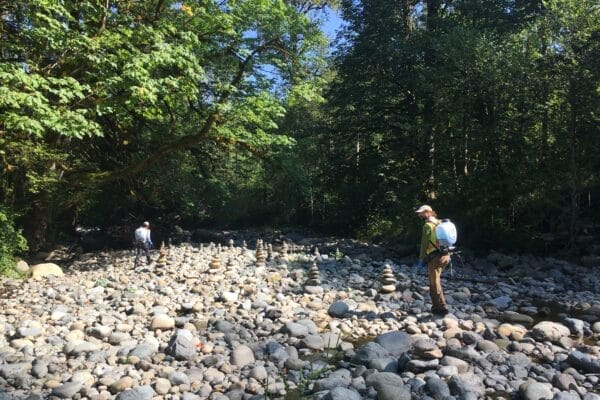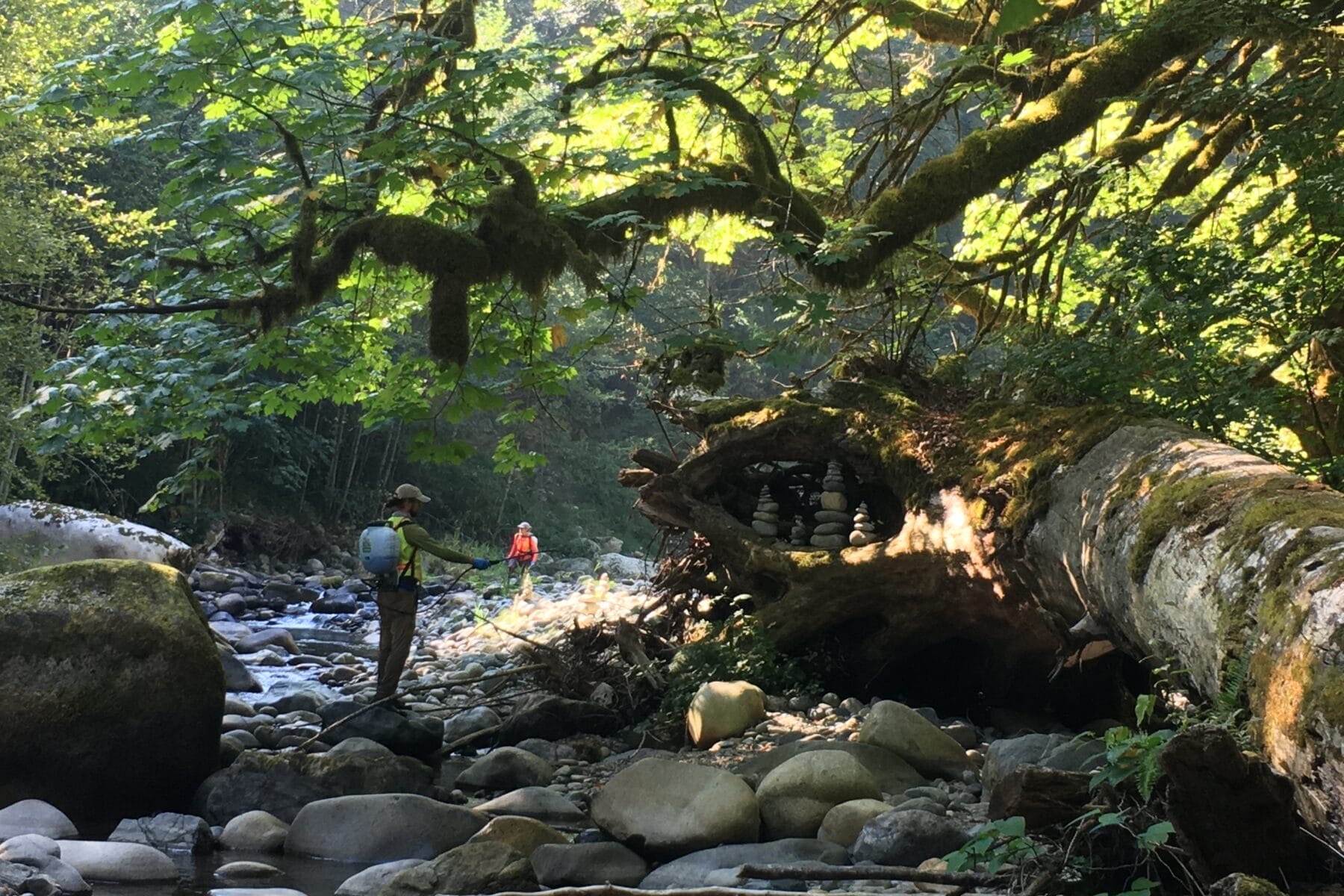It’s Knotweed Removal Season!
It’s August, which means we (the Mountains to Sound Greenway’s restoration crew) are heading full on into knotweed season! Knotweed is commonly found growing directly along the edges of streams, creeks, and rivers, which has seriously detrimental impacts for our native salmon, and subsequently, our resident orcas. What this means for us is that we get to walk directly in these impacted streams, keeping cool in the heat of the summer, while treating miles and miles of this tenacious plant.
If you’ve never had the pleasure of treating knotweed in a fast-flowing river . . . imagine trying to balance on a rock. Now imagine that the rock is covered in moss and soaking wet. Next, imagine that something, i.e., the water, is unrelentingly pushing you off that wet and mossy rock. Let’s add a 35 pound pack to your back and set you off for 7 miles. Enjoy! It may sound a little brutal, but in reality, it’s a really fun and adventurous task that allows us to make a serious impact and see areas of Washington that many of its citizens never get a chance to.
 “It’s a slippery job, but someone’s got to do it. But seriously, it feels great to be making such an impact on the creek — restoring habitat for salmon and helping stabilize the banks. It’s a really fun project to be a part of!” – Kate, Restoration Crew Lead
“It’s a slippery job, but someone’s got to do it. But seriously, it feels great to be making such an impact on the creek — restoring habitat for salmon and helping stabilize the banks. It’s a really fun project to be a part of!” – Kate, Restoration Crew Lead
There were a few smaller projects we tackled early in August, but on the 9th, things really got kicked into gear tackling the Issaquah Creek Basin Knotweed Project. This project requires the cooperation of more than 130 private landowners and treats more than 65 acres of knotweed. Currently, we’re split between the South Fork of the Snoqualmie River and the Raging River. The Snoqualmie River South Fork project only covers about one river mile, but the knotweed pushes further into the floodplain, so we’ll still end up covering more than 20 acres of area. The Raging River, however, covers more than seven river miles and, much like the Issaquah Creek project, requires the coordination of hundreds of private landowners. At the end of the month, we’re working on some new projects for the Greenway: The Belmondo project, which excitingly is the Greenway’s first work on the Cedar River; and the Svedko property, which is another site along the South Fork of the Snoqualmie.
These projects are physically taxing but environmentally and emotionally rewarding. The end of Knotweed season is often warmly welcomed, but it can feel bitter-sweet knowing that there’s always more. Post-knotweed, we’ll be continuing work in Snoqualmie Pass and moving into other site maintenance projects before getting into planting season.
Click here to learn more about our knotweed control program, and consider making a donation to fund future projects such as this one!






